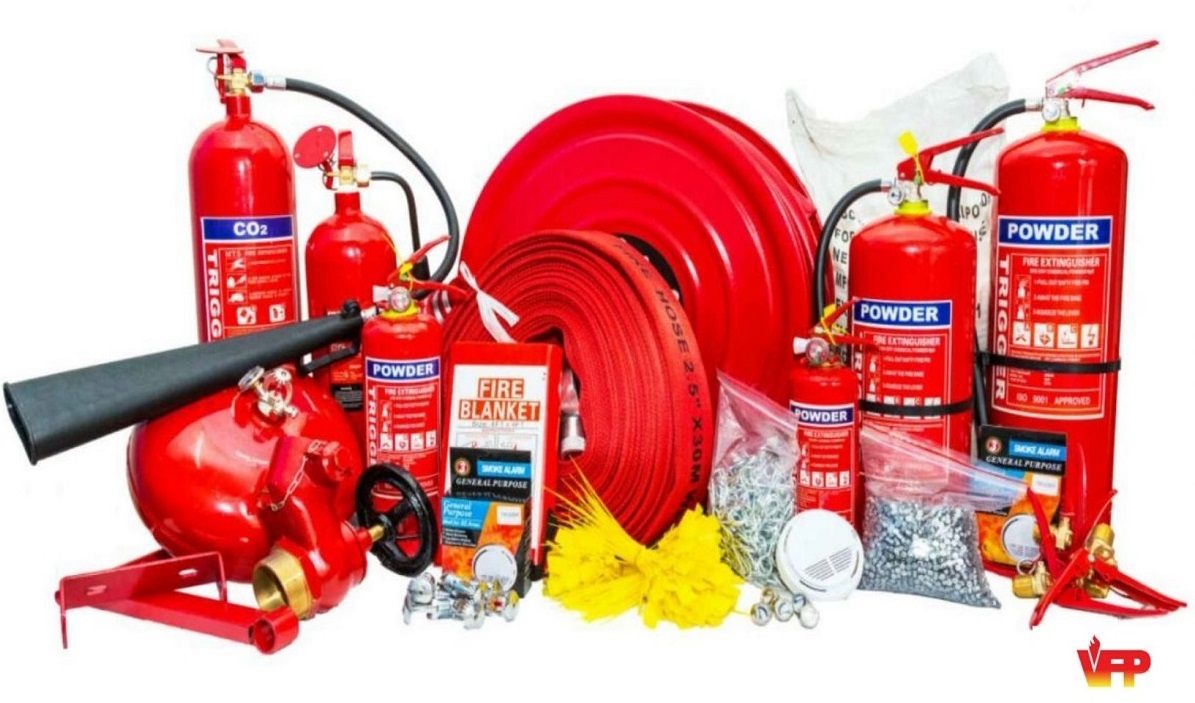Firefighting is a highly skilled and dangerous profession that relies on tools to ensure safety and success. The tools firefighters use are designed to protect them from extreme heat, help them navigate dangerous areas, and successfully extinguish fires. Understanding the firefighting tools firefighters need and how they work can help them better understand the hard work and courage that goes into their daily work. From safety gear to water systems, every piece of gear is critical to protecting people and property.
Personal Protective Equipment
A professional firefighter’s personal protective equipment (PPE), also known as a “turnout suit” or “protective clothing,” is their first line of defense. It contains several key components that protect firefighters from heat, fire, falling objects, and hazardous materials.
The purpose of a helmet is to protect a firefighter’s head from impact, heat, and falling objects. Helmets are typically equipped with a visor or hood to protect the eyes. Jackets and pants are made of Nomex or Kevlar, fire-resistant materials that retain heat and prevent burns. In addition, these garments are impermeable, which reduces the risk of steam burns.
Gloves protect the hands from heat and sharp objects, and fire boots keep the hands warm and provide non-slip protection so that firefighters can walk safely through gravel or water. Fire hoods are usually worn under helmets to prevent overheating of the face, ears and neck. All of this equipment allows firefighters to enter very dangerous places while reducing the risks.
SCBA is the abbreviation for self-contained breathing apparatus
For firefighters, a self-contained breathing apparatus is one of their most important tools. SCBA can protect the breathing of firefighters in environments with thick smoke, hazardous chemicals or insufficient air. It consists of a high-pressure gas tank, a pressure regulator, a mask and a belt system.
The mask seals the mouth and nose, allowing clean compressed air to flow from the tank. The gas tank usually contains enough air for 30 to 60 minutes of use, but this depends on the frequency of use and the activity level of the person. Firefighters can use a pressure gauge to monitor the amount of air in the gas tank. Many self-contained breathing apparatus (SCBAs) also have an alarm that sounds when the air volume is low.
SCBAs are not only very important in firefighting, but also when working with hazardous chemicals or in tight spaces with limited air flow.
Fire hose and nozzle system
In firefighting, the fire hose is an important tool for bringing water or foam to the fire. Different types of hoses are used for different purposes. For example, attack lines are used for small spaces, while supply lines are used to bring water from the faucet to the engine.
Most hoses are made of strong plastic or rubber that can withstand rough ground and pressure. The function of the hose tip is to change the speed and shape of the water flow. With an adjustable hose, firefighters can choose between a straight jet of water that sprays further and deeper, and a mist jet that covers a larger area and keeps the firefighter cool.
Depending on the situation, water can be pumped through pipes from fire hydrants, fire trucks or mobile water tanks. To fight fires quickly and effectively, you need to know how to operate the hose and the spray nozzle.
Thermal Imaging Cameras
Today, thermal imaging cameras have become an essential part of firefighting. These devices can be worn on the head or in the hand. They can capture heat signals and convert them into visible images. This allows firefighters to see through the smoke and locate injured people, the source of the fire and possible re-ignition of the fire.
Thermal imaging cameras are very useful in search and rescue operations because they can quickly locate people, even if they are asleep or trapped. They can also be used to check the structural strength of a building and help make decisions during firefighting or repairs.
Thermal imaging technology allows firefighters to get a clearer picture of the situation and reduces guesswork, improving the safety and efficiency of the fire department.
Fire Extinguishers and Foam Systems
Fire extinguishers are not only important in public areas, but also for firefighters, especially when fighting small fires or certain types of fires.
People and provide air circulation. Telescopic ladders, roof ladders and attic ladders have various uses, such as climbing higher floors or crossing narrow spaces.
Ventilation aids are also very important. Firefighters often have to evacuate buildings to remove smoke, heat and dangerous gases. This can be done by breaking windows or making holes in the roof with a knife, chainsaw or electric saw. Positive pressure fans can also be used to bring in fresh air and remove smoke from the building.
Good airflow provides better visibility, lowers the temperature and protects victims or rescuers inside the building.
Fire trucks and other equipment
Fire trucks and fire engines can be used as mobile command centers and transportation devices. Each piece of equipment has its own specific purpose. Fire trucks are usually equipped with pipes, water tanks and water pumps. Ladder trucks are equipped with long, flexible ladders to escape and reach high places. Rescue tools and other rescue equipment are usually carried in rescue vehicles, which also provide support for special rescue missions.
In addition, these vehicles are equipped with communications equipment, lighting, engines, and space to store tools and other supplies. Getting essential tools to the scene quickly is essential for a successful response.
Rescue and Extrication Tools
Firefighters often have to extricate people from car accidents and collapsed buildings. These tools are often called “survival tools.” They are used to cut metal, pry open car doors, and lift large objects. Sometimes every second counts in an evacuation. These powerful tools can save a lot of time.
Other hand tools, such as sledgehammers, crowbars, holligan’s rods, and bolt cutters, are needed for forcing entry, removing debris, or entering locked buildings. They are essential in fire and rescue operations because of their versatility.
Emergency Response Communication Tools and Systems
Clear communication is critical in any type of disaster. To stay in touch with their team and command center, firefighters use walkie-talkies, microphones, and incident command systems. These methods help people work together, track personnel movements, and make the most of resources.
Software tools and incident boards also help plan response options, track risks, and ensure everyone is accountable. Structured communication keeps everyone on the scene united and working together.
In short, the tools that empower heroes
Firefighters use more than just hoses and fire boots. They have an arsenal of tools designed to save lives, protect property, and keep responders safe. Every tool a firefighter uses, from the smallest hand tools to the most advanced breathing apparatus, is essential to doing their job well and safely.
Understanding how this equipment works makes you realize the skill, training, and courage it takes to tackle problems head-on. Every brave firefighter has a powerful set of life-saving equipment and the skills to use it when it matters most.

